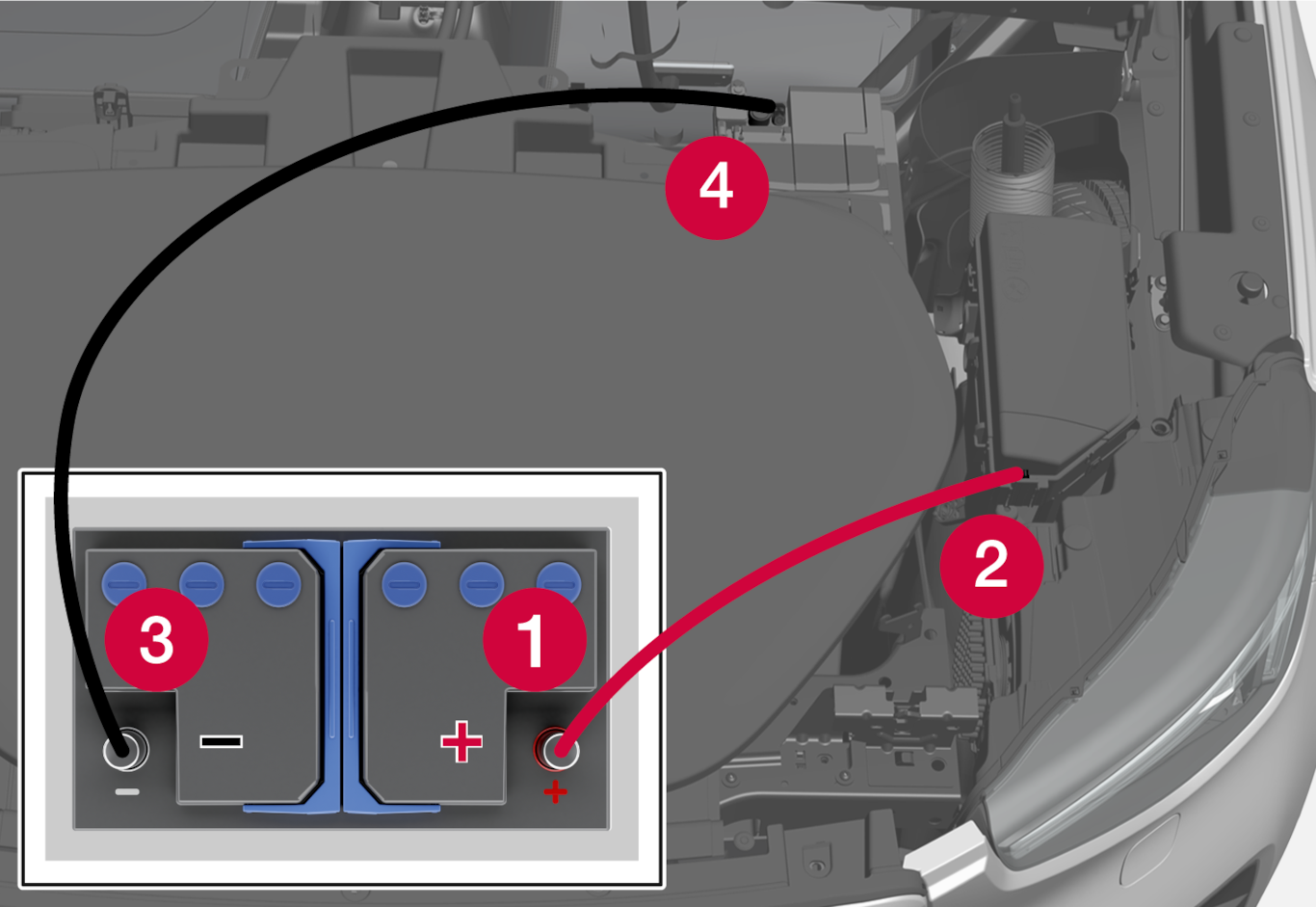Under normal conditions, the 12 V battery is charged when the vehicle is charged, and through electrical current transfer directly from the high-voltage battery when the vehicle is not plugged in for charging.
If the 12 V battery becomes discharged for any reason, it can be jump-started. There are several reasons why a battery may become discharged, such as the vehicle not being used for a long period of time, a temporary malfunction or a blown fuse in the vehicle's charging circuit. A discharged 12 V battery needs to be charged in order to start the vehicle and power its electrical systems. After startup, it is possible to start charging of the vehicle using a charging cable, which is necessary when the high-voltage battery is also discharged. If the vehicle is out of range for charging, it must be towed.
To jump-start the vehicle, jumper cables must be connected to the vehicle's charging points for the 12 V battery.
To access the charging points, a number of panels under the hood must be removed.
Important
The charging points of the vehicle are only intended for jump-starting the vehicle in question. The charging points are not intended for jump-starting another vehicle. Using the charging points to start another vehicle could cause a fuse to blow, which would cause the charging points to stop working.
If the message 12 V battery fuse failure Service required is displayed in the instrument panel, a fuse has blown and needs to be replaced. Volvo recommends contacting an authorized Volvo workshop.

To avoid short circuits or other damage, the following steps are recommended when jump starting the battery using another battery:
Important
Important
Note
Remove the jumper cables in the reverse order ‒ first the black cables and then the red cables.
Make sure that the clamps of the black jumper cables do not come into contact with the vehicle's positive charging point, the assisting vehicle's battery's positive terminal, or the red jumper cable's clamps.
Note
Warning
Warning
- The 12 V battery can generate oxyhydrogen gas, which is very explosive. A spark caused by an incorrectly connected jumper cable could be enough to make the battery explode.
- The 12 V battery contains sulfuric acid, which could cause serious burn injuries.
- If contact with eyes, skin or clothing occurs, flush the affected area immediately with water. Obtain medical help immediately if eyes are affected.
- Never smoke near the battery.